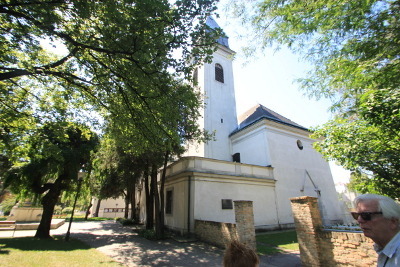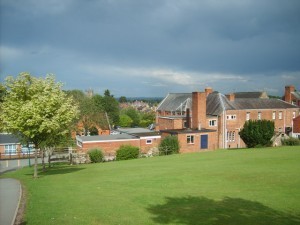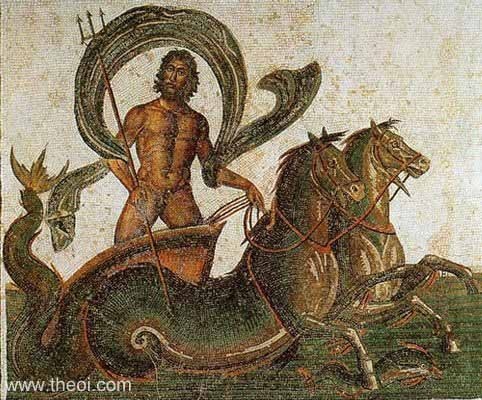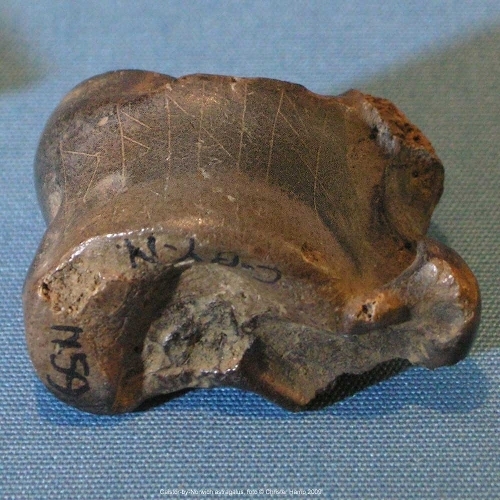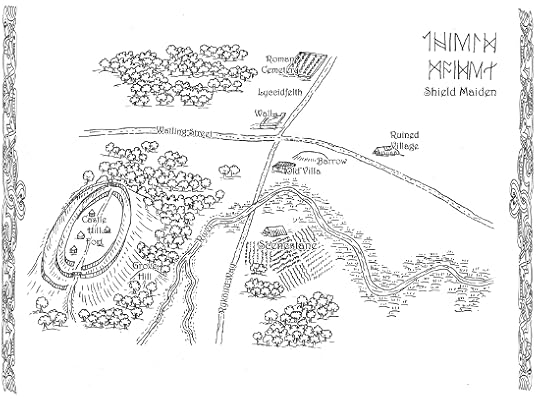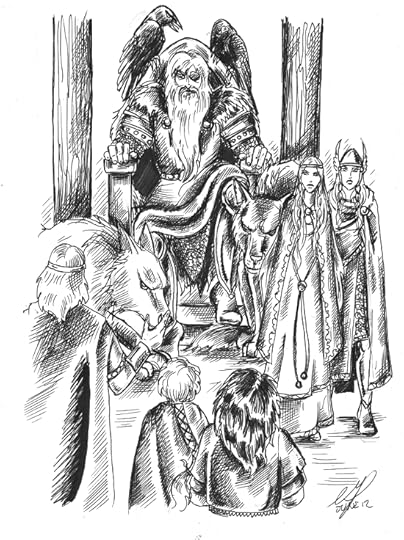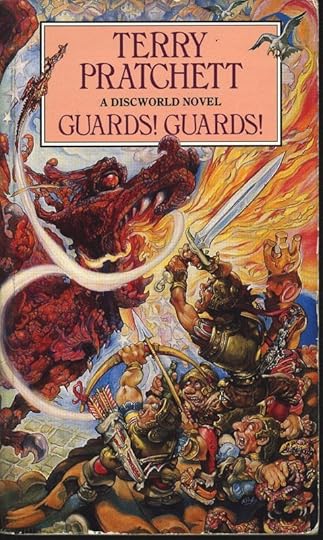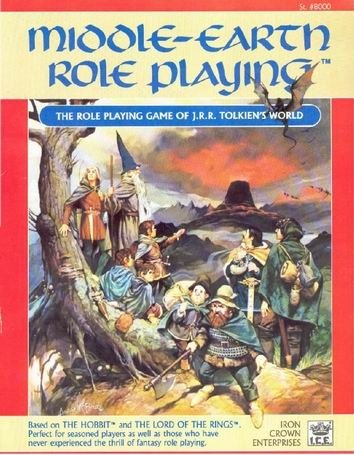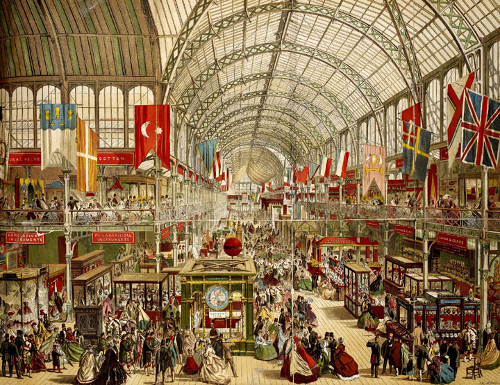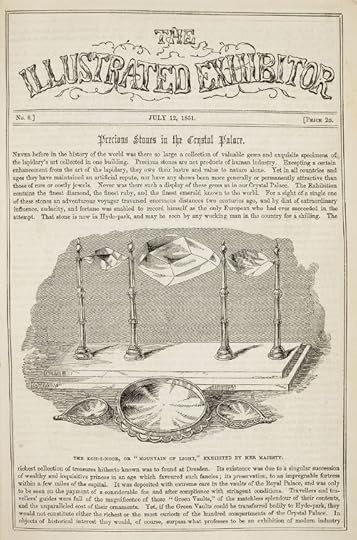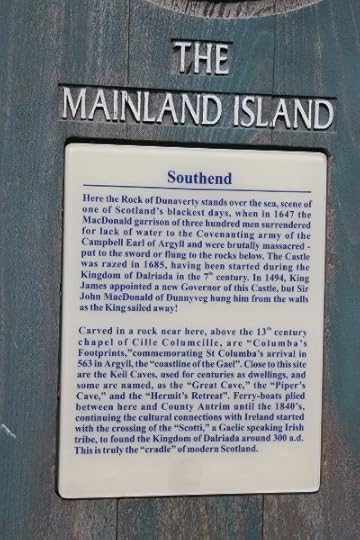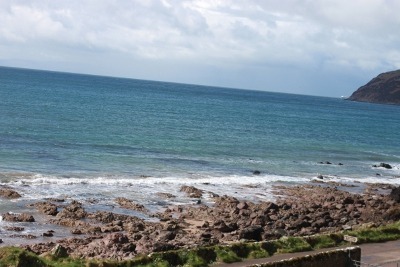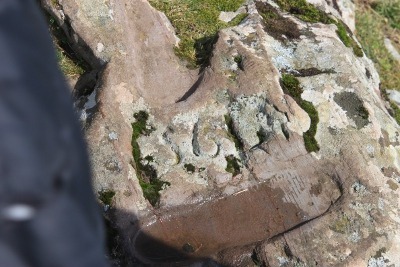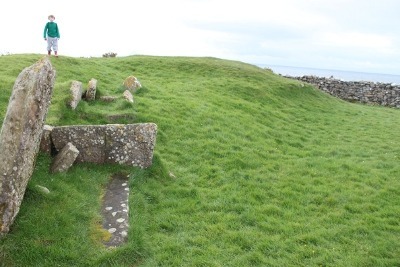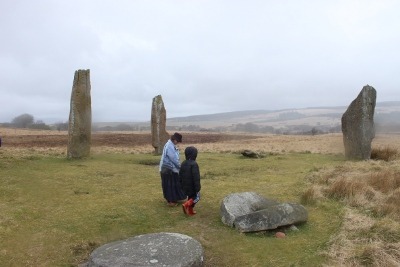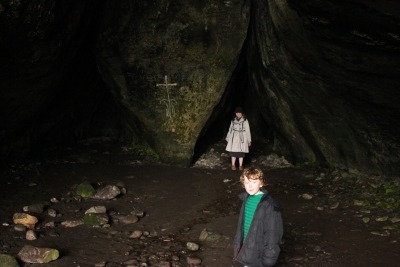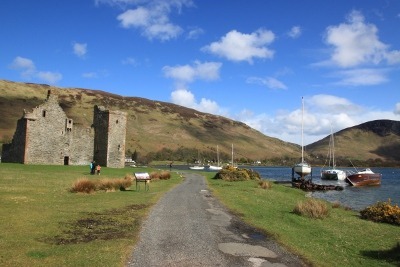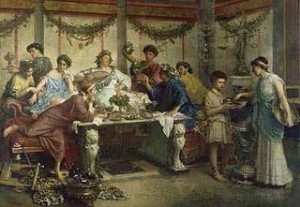Richard Denning's Blog, page 11
August 20, 2012
A visit to Aspern Essling – site of Napoleon’s First Defeat.
As I was staying in Vienna August 2012 I was able to visit the Battlefields of Aspern Essling and Wagram. These were the sites of the clashes between Napoleon and Arch Duke Charles. In the case of Wagram it would be the largest battle ever fought up to that moment. This blog is about the first battle – Napoleon’s first defeat.
In 1809 Napoleon had never been personally defeated. He had over 12 years fought campaigns in turn against Austria, Russia, Prussia and other states and had beaten them each. Austria had been heavily defeated in 1805 at Austerlitz, Prussia in 1806 and Russia in 1807. In 1809 Britain alone was fighting France in distant Spain and Portugal. The terms of the defeat in 1805 were harsh on Austria and so in 1809 Austria decided to invade Bavaria (a French ally) to strike back.
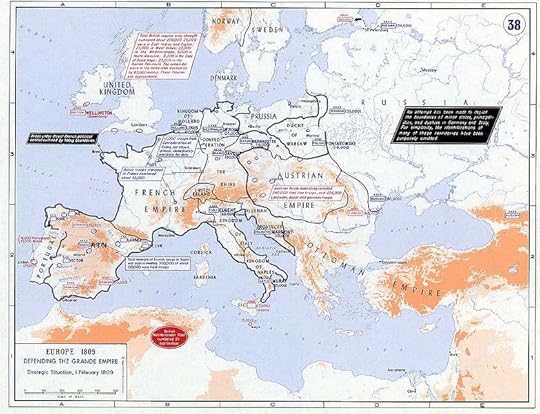
The Austria army in 1809 had been radically reformed after the defeat at Austerlitz in 1805 and at a tactical level could now compete with the French. Its shortcomings were at the strategic level and there were major faults with an over rigid command structure that did not allow for much initiative. This would hurt the Austrians in the long run.
Initially the Austrians made advances into Bavaria but Napoleon rushed from Paris to take command and ensured the Austrians were defeated in Bavaria. The French Army now took Vienna whilst the Austrian Army (still mostly intact) was reforming accross the Danube. Napoleon knew he had to cross the Danube to engage the Austrians and defeat them. The Austrians waited on the far side, watching the river and determined to make the crossing costly.
Aspern-Essling
The Danube in 1809 near Vienna was a tangle of islands and channels. To cross the river Napoleon had to build many bridges whilst the Austrians were constantly floating trees and even boats down stream in an attempt to disrupt this effort but on May 20th the French began the crossing. The Austrian commander – the very able Arch Duke Charles ordered his Army to march to the crossing point and form up in a great arch awaiting the French.
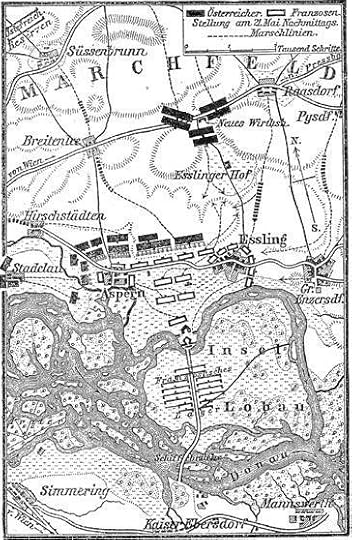
The French were only able to get across 77000 men over the 2 days of the battle due the river crossings being severed on numerous occasions whilst Charles brought 99,000 to bear. The battle began on the 21st May at Aspern withe three Austrian columns assaulting the singe French Corps under Massenna. A single French division in Essling hung on their by its finger nails. To relieve the pressure Napoloeon flung his cavalry into a charge though the center which was repelled but helped maintain control of the villages as night fell.
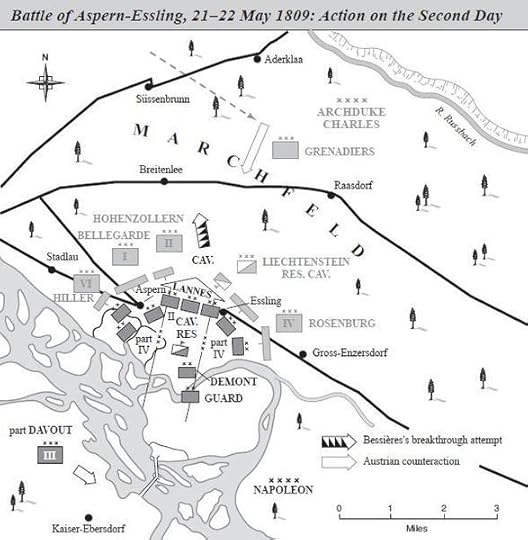
On the second day the action grew more intense as more French were brought across and more Austrian’s arrived. Control of both villages changed hands several times with fighting focusing on the church at Aspen and a large granary at Essling. (the later being held by the French thoughout the battle.)
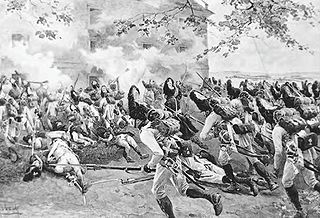
Napoleon attempted to break out by organising an assault through the centre and it seemed to work but at the critical moment Arch Duke Charles is reported as turning up, grabbing a regimental colour and peronally leading the counter attack.
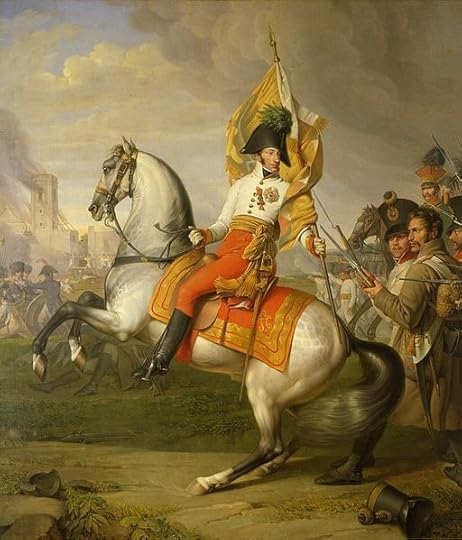
In the end the Austrian simply had more men and the French gave way and eventually were forced to retreat accross the river. Napoleon had been defeated and in fact his friend Marshall Lannes who had been heavily involved in the fighting was mortally wounded but for Charles this was only a local victory. He had won the battle but NOT the war. He knew Napoleon would try again. Losses were heavy as a % of total numbers present with 20,000 to 30,000 on each side dead or wounded or missing.
The Battlefield Today.
Aspern and Essling today are suburbs of Vienna and finding any sign of the battle is hard (Wagram which I will cover in my next Blog is outside Vienna and much easier to track down. ) Never the less a visitor can locate the church at Aspern which is a rebuild on the spot of the one destroyed by fighting in 1809. There is a Memorial to the battle there and a small museum:
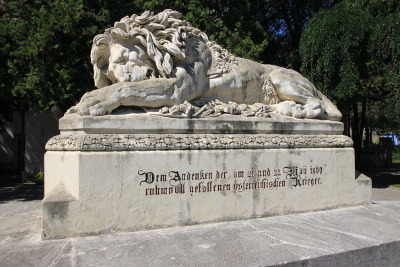
The Memorial at Aspern
Between Aspern and Essling there is a huge car factory but you can find a field of two that would have witnessed the fight in the centre ground.
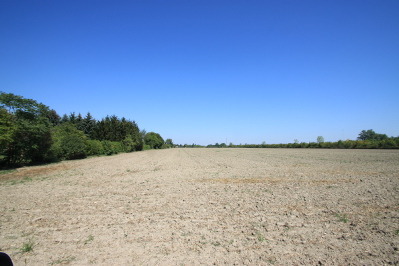
Looking North accross the flat central ground. The wood on the left lines the east edge of Aspern. This is where the French attempted to break out.
Finally at Essling the granary is still present. One can spot musket ball holes in the iron door. This too is a musuem but only open a couple of hours sunday am’s like the other one (I missed these two but in my next blog will mention the superb museum at Wagram.)
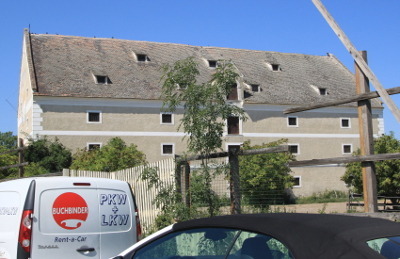
The stone granary at Essling the scene of desperate fighting as the French held it against repeated assaults.
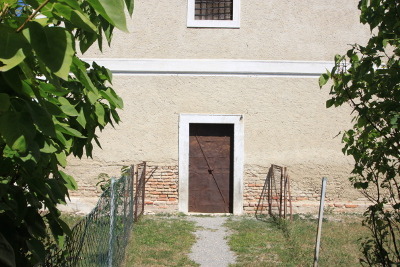
The iron door still shows signs of musket balls hitting it
So that is Aspern Essling. Next time: Wagram 1809 – the Emperor Strikes Back!

August 5, 2012
A dark ages battle gives the town of Oswestry its name
The Battle of Maserfield was fought on this day – August 5th 642 (possibly 641) between the Kingdom of Northumbria under King Oswald on one side and an alliance between King Penda of Mercia and welsh allies, possibly from Gwynedd and Powys.
Maserfield was the old name for the area and probably meant ‘marshy field’ (perhaps a description of where the battle took place. But that is not what it is called today. The site of the battle is usually identified with Oswestry on the Welsh borders. What does that name mean and how was it reached? Read on to find out.
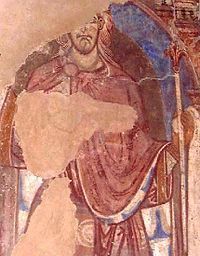
St Oswald in a 12th century image
Background to the Battle
This battle was just the latest in the titanic struggles between the various English Kingdoms for dominance. For a long time the Kingdom of Kent was all powerful and its king was called BRETWALDA or lord of Briton. In the early 7th century the East Anglia king Redwald became Bretwalda and soon afterwards it was the turn of Northumbria to rise to dominance. Their ruler, Edwin had just returned from 14 years of exile, killing Aethelfrith who had sent him into exile and in turn leading to Aethelfrith’s own sons Oswald, Oswiu and their brothers fleeling to the North.
Edwin now set about expanding Northumbrian power. This expansion brought him into conflict with Mercia, Gwynedd and Powys (ironically nations that had sheltered him during his exile). Edwin was successful but in the end these enemies united under the leadership of the powerful Kings Penda of Mercia and Cadwallon of Gwynedd.
They invaded Northumbria, killed Edwin in 633 at Hatfield chase and ravaged Northumbria. Oswald, Aethelfrith’s son returned from his own exile and defeated Cadwallon, killing him at the Battle of Heavenfield in 634.
The Battle of Maserfield
Oswald in turn became BRETWALDA and again expanded Northumbria power, pegging back Mercian dominance. In 642 he perhaps over stretched himself, driving deep into enemy territory to what is now the Welsh borders. There at Maserfield his enemies destroyed his army and slew him.
The actual location of the battle, like so many others is not known with certainty. But local tradition places it near Oswald’s Well (also linked to the story – the site of as spring that emerged where his arm was dropped by an eagle – see below). The fields of Oswestry school and maybe its carpark are thought to be the spot:
Oswestry – what is in a name?
After the defeat his enemies chopped up his body and according to legend, one of his arms was carried to an ash tree by a an eagle. Oswald was Christian and Penda pagan so this event became part of the Christian legend. Oswald was named a saint and miracles were then reported near the tree. What is more likely is his enemies hung his body in a tree, or on poles. Whatever the truth the name of the site derived from a reference to “Oswald’s Tree”.
Aftermath
Penda was now all powerful and maintained dominance for a good decade. He should really be named Bretwalda. But the official list of Bretwalda’s was drawn up be Bede, a Northumbrian scholar. The next Bretwalda was Oswiu, Oswald’s brother. Oswiu actually killed Penda at the Battle of Winwaed in 655

July 23, 2012
The Feast of Neptunalia
July 23rd was the day the ancient Romans celebrated Neptunalia – a two-day festival in honour of Neptune as god of waters, celebrated at Rome in the heat and drought of summer. The idea was to appease Neptune so he would send rains to keep the crops healthy. The people used to build huts of branches and foliage in which they probably feasted, drank, and then slept overnight, continuing the fun the next day.
In ancient calendars these days were marked as Neptune ludi et feriae. Ludi means games and Feriae festival or feast. This implies that the celebrations consisted of games and sports as well as feasting. Neptune is sometimes associated with horses so it seems likely that horse racing was the order of the day, indeed his temple in Rome was close to the Circus Flaminius – the horse racing statidum
July 4, 2012
The first word in English
In 1929 an RAF crew took aerial shots of the site of the old Roman town of Venta Icenorum around the church of Caistor St Edmund near Norwich. The photographs revealed an extensive road network and soon the archaeologists moved in. During their excavations they came across a large early Anglo-Saxon cemetery with burials dating from the 5th century.
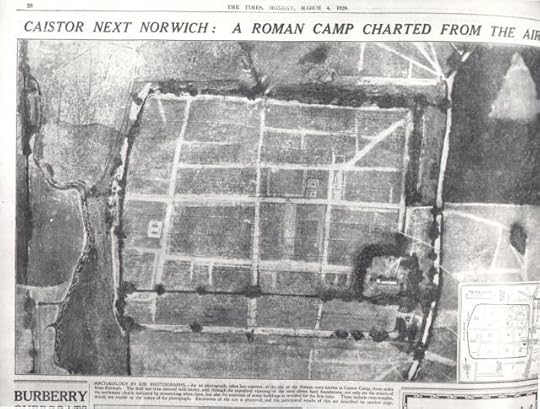
In the cemetery they found some cremation urns as well as pots with possessions in. One of these was full of bones – but they were not human remains. Most were sheep knuckle bones and probably dice or other game pieces. But amongst them was a bone that was and still is of historical importance.
It was a bone from a Roe deer and upon it there were runic inscriptions:
The runes were old German/ old english runes and spelt this word:
 Which means Raihan. What is Raihan? Well the ‘an’ in old German meant ”belonging to or from” and the Raih is believed to be a very early version of the word ROE. So this inscription which has been dated to circa 420 AD means “from a roe”.
Which means Raihan. What is Raihan? Well the ‘an’ in old German meant ”belonging to or from” and the Raih is believed to be a very early version of the word ROE. So this inscription which has been dated to circa 420 AD means “from a roe”.
It is not uncomon in the Saxon period to find similar bones from other animals with writing telling us which beast it is from.
So what we have here are the possessions of a man or woman from the VERY first years of Anglo-Saxon settlement of East Anglia buried in a cemetery that would have been very new within or close to a decaying Roman town. What we also have is the VERY FIRST word written in what would one day become England in the language which would one day be called English.
What we see here are the scrapings of one of the first of the mercenaries who crossed the north sea on hearing the call from the Britons for fighters to help protect Britannia from the Picts and Irish. He and thousands like him stayed on to carve out a nation.
There is more on this word an 99 other ones that form part of our history in The Story of English in 100 words by David Crystal. Its a fascinating book.
June 9, 2012
The World of Shield Maiden
Shield Maiden is the first book in The Nine Worlds series in which the historical world of Anglo-Saxon England meets the mysterious world of myths and legends, gods and monsters our ancestors believed in.
This is the world as it might have been had those stories been true…
Shield Maiden is set in our world in about the year AD 600. These are the years when thousands of Anglo-Saxons are crossing from Germany and Denmark and pushing west, creating a land that will one day be called England.
The heroine of Shield Maiden is Anna. Anna’s people are Angles. Tradition says that the Angles who came to Mercia crossed the North Sea in around 527 and so by Anna’s time her people would have lived in Scenestane for over 70 years.
Scenestane itself and the surrounding lands are based on the village of Shenstone. Two Roman roads do cross northwest of the village near the village of Wall – itself the ruins of the old Roman town of Letocetum. Now owned and run by the National Trust, it can be visited, as can the museum there (www.nationaltrust.org.uk/letocetum-ro...).
Evidence of several Roman Villas have been found around the village in archaeological digs over the last century. Likewise there was a barrow north of the village, and on the hills to the west, there is an Iron Age hill fort on private land. Shenstone means ‘beautiful stones’ and refers to the Roman ruins that would have been visible when Anna’s ancestors came to the village. The modern day parish church and the ruins of a much older one are on a rocky hill populated with trees. The English often built their churches on former pagan temples so to me it seemed a good place for my pagan temple.
The Angles were not Christians. Mercian kings allowed Christian missionaries in from AD 633 onwards but it would take a century for it to all become Christian. So Anna, her ancestors and even her own children (if she lives to have them) would be pagan.
A world of beliefs
The Anglo -Saxons believed in many gods and goddesses. There are at least fifty different gods, each having care and power over certain aspects of the universe. Anglo-Saxon gods are not always kind. They can be harsh, arrogant and certainly strong-willed. In Shield Maiden we hear about four gods:
Thunor is the thunder god. The Vikings called him Thor and that name is more familiar to us today.
Freya is the Goddess of Love and Beauty but also in charge of the Valkyries. Half those who die in battle are sent to her afterlife fields to live with her.
Heimdall: Gatekeeper of the gods. Watches the Bifrost – the gateway to Asgard. He has very good eyesight and hearing. It is said that he can hear and see a single blade of grass grow.
Woden (Called Odin by the Vikings and Woden in England): Chief of the gods. God of wisdom and thought. He is also a war god. An old man with a long beard. Has only one eye so wears a patch. He can make the dead speak and change men’s fate and destiny – their wyrd.
A World of Monsters
The Anglo-Saxons believed in many different creatures and monsters. They populated their world and haunted their nightmares.
Barghests (sometimes called black dogs) are evil creatures who appear as huge black dogs or hounds, as large as a calf. They can move silently at times. Some can shape-shift and appear as different creatures. These terrifying dogs are often linked to certain roads, gates or locations near water.
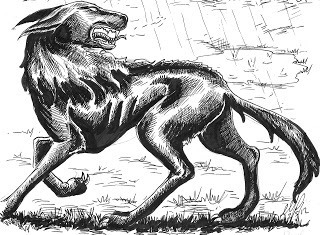 Dweorgar ( or dwarfs)are usually described as ugly, often bad tempered and occasionally evil. Dwarves are talented at making magical items and artefacts. They created many of the powerful artifacts made by the gods such as the Brisingammen of Freya.
Dweorgar ( or dwarfs)are usually described as ugly, often bad tempered and occasionally evil. Dwarves are talented at making magical items and artefacts. They created many of the powerful artifacts made by the gods such as the Brisingammen of Freya.
Svartálfar (dark elves) these are very different from the beautiful light elves that became Tolkien’s elves and which today we might be more famliar. Dark elves are ugly and misshapen but perhaps nearer an evil version of Santa’s elves. They can influence human dreams and give nightmares. They live underground. Possibly sunlight can turn them to stone which is why they avoid it.
Ravens : Ravens, although a natural bird have deep symbolism in Saxon Mythology. Firstly Woden (Odin) has two ravens called Huginn and Muninn (thought and memory) who flew across the world and brought news back for the god. Ravens were often seen at battlefields and so became associated with death. Indeed seeing a large black bird became a bad omen suggesting imminent death for someone.
One of Nine Worlds
The Anglo-Saxons along with their Norse and German brethren believed that the universe was a big tree called Yggdrasil. In its branches nine worlds (sometimes mentioned as just seven) were supported. The nine worlds are:
Asgard – home of the gods and location of Valhalla where the dead go to feast with Woden.
Midgard – Our world, Earth. Home to humans.
Vanaheimr – Home to Vanir, gods of magic.
Ālfheimr – The world from which the beautiful light elves come.
Jotunheimr – Land of mountains and giants.
Muspellsheimr – Land of fire and beings of fire.
Svartálfaheimr – Land of the svartálfar dark elves.
Nidarvelir – Land of the dweorgar or dwarves.
Niflheimr – Land of Ice.
In addition, near Niflheimr is Hel (spelt with one l)- the realm of the dead.
This is the world of Shield Maiden.
Shield Maiden is a Historical Fantasy Adventure For Children of Ages 9+
Anna is a 12 year old girl growing up in a Saxon village in 7th century Mercia. Her life changes when she finds a golden horn in the ruins of a Roman Villa. Soon an ugly dwarf, a beautiful sorceress and even her own people are after her.
What powers does the horn have and why does everyone want it?
And why is Anna the only one who can get a note out of it?
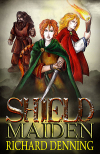

June 4, 2012
How I learnt how to write my books by playing games and watching Dr Who
by Richard Denning
Some writers can point to early success, awards and pundits for their writing from their school years. This was most certainly not the case for me. I loved reading from a very early age and can remember devouring books like The Famous Five, The Secret Seven (Enid Blighton) and The Three Investigators (Hitchcock). Anything with a mystery or from Sci Fi and Fantasy Genres was my staple diet. My favourite book has always been The Lord of The Rings – indeed my parents bought me a boxed set I still own as a reward for doing well at ‘O’ Levels at the age of 16. So I loved to read BUT I hated English and English Literature lessons – they just seemed to take the fun out of a good book. As such I certainly did not win any awards for my writing in my school years. This is not to say that I was not writing. My first novel (now lost) was “The insect invasion of Earth” about an invasion of giant insects and the war to defeat them. It is probably good THAT book was lost!
I decided to become a doctor and went off to the university of Manchester. 5 years of medical studies were followed by several years of long hours in hospital and then finally a permanent position in a GP practice in Birmingham. Through those years I did not do any writing BUT my imagination was being stimulated still. To begin with, in my first year at university, I discovered the first of Terry Pratchett’s amazing Disk World books. I have read every one and love his writing. Many other fantasy books followed of which the best were by David Eddings and Raymond Feist as well as Young Adult fiction including Garth Nix’s superb Keys to the Kingdom and of course Harry Potter. At the same time I became a fan of Bernard Cornwell’s Historical Fiction and similar author’s work. I also have always been fascinated by history (despite this being another subject I did not enjoy at school) and love visiting historical sites as well as reading about them. So hundreds of books (and many holidays) later my favourite genres to read and write fall into that area of cross over between historical fiction, scifi and fantasy and Young Adult novels.
Just as I spent many hours reading about these subjects my main TV and movie viewing also fall into these areas. I am really not keen on reality TV, Soap, much sport (apart from Cricket) and chat shows. On the other hand I have absorbed thousands of hours of Star Trek, Dr Who, Buffy and Angel, Stargate, Babylon 5, comedy shows like Blackadder, Red Dwarf, Monty Python and documentaries galore on the History Channel.
All that helped stimulate the imagination but it is playing games that brought it all together. I love board games, card games, miniature gaming and roleplaying. In particular I am a game designer and have tinkered with designs and ideas for games for many years although my first published board game only came out in 2010 – The Great Fire of London 1666. I have also run many roleplaying campaigns. When you are the “dungeon master”/ games master/ umpire or whatever you have to invent and populate the world that the players will explore. Then, as they decide what to do and where to go, you must determine who they meet and what those people want. The process of running a good roleplaying game is really the same as writing a book. Having run campaigns set in Spy Genres, aboard space ships, in deep dungeons and in the Wild West (and many more) I can honestly say that I have had to come up with a lot of ideas to keep the story going. All those NPCs (none player characters) need motives, reasons to exist and thinking up those reasons is really just the same as thinking up a good character.
So over the last 10 years as I started to try and write fiction all those elements – all the books, all the visits to castles and battlefields, all the movies and TV and all the games plus a fair helping of having seen a bit of the world as a doctor – all of that went in, subconsciously mostly, into the pot. I have had to learn a lot about writing and have much to learn because this process is ongoing but I hope this little piece explains something of what makes me tick.
May 1, 2012
May 1st 1851 – The Great Exhibition Opens
On May 1, 1851, the Great Exhibition opened in the Crystal Palace in London. It was spectacle of such awesome sight and splendour that no one visiting it would have ever seen anything like it before. It was the model that the World Fairs of the future would be based upon. It was entirely an idea dreamt up by Queen Victoria’s husband, Prince Albert. Europe and Britain in 1851 was at peace. The terrible Napoleonic wars were a distant memory and the horrors of the Crimea was two years into the future. Britain was entering the height of its Imperial age – a might driven by the engines of industry. It was this might and this industry that Albert planned to show the world.
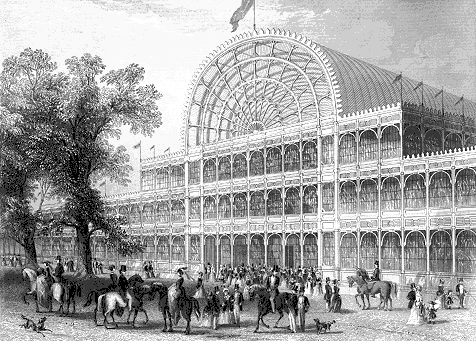 The commission in charge of the exhibition held an international competition to design a building for the exhibition. the winning bid was that of Joseph Paxton. He designed a huge greenhouse to house the displays. Construction work began on 1 August 1850 and involved more than 2,000 men. The building work involved thousands of sheets of glass. 1,000 iron columns, 2,224 trellis girders, 4,000 tons of iron, 30 miles of guttering and 202 miles of sash bar.
The commission in charge of the exhibition held an international competition to design a building for the exhibition. the winning bid was that of Joseph Paxton. He designed a huge greenhouse to house the displays. Construction work began on 1 August 1850 and involved more than 2,000 men. The building work involved thousands of sheets of glass. 1,000 iron columns, 2,224 trellis girders, 4,000 tons of iron, 30 miles of guttering and 202 miles of sash bar.
On May 1st 1851 exactly on schedule the exhibition opened to a London eager and keen to see the wonders within. The Queen herself opened the exhibition and visited on several occasions. At first the price was £3 for gentlemen and £2 for ladies. Their coaches were valet parked whilst they looked around. On the 24th May the price was drooped to just the a shilling a head and the population responded with unbounded enthusiasm. The travel agent Thomas Cook arranged special excursion trains. They came in their many thousands from all over the United kingdom and the world.
When I hear people today saying that they don’t plan to visit the London Olympics because “London is a long way a way” I treat that remark with the contempt it deserves. In 1851 people travelled hundreds of miles in slow coaches and trains. One old lady even walked, all the way from Penzance to visit it!
When they arrived outside they were treated to a true wonder of the world.
As they emerged from between the buildings, Tom saw a sight that took his breath away. Rising above the mature oaks and beech trees that populated Hyde Park was a colossal structure. Made of glass and steel, which caught and reflected the summer sun as it climbed the southern skies at their backs, Tom got the impression of a gigantic greenhouse. Indeed, in terms of style if not size, the building did look a little like the one his grandfather owned on an allotment a few streets from Tom’s house. He almost expected to see the old man pottering around with pruning shears. This, though, was not a greenhouse. This was a vast exhibition hall hundreds of metres long and so tall that Tom could see that its roof actually arched above one of the Park’s ancient oak trees. No wonder they called it the Crystal Palace, he thought.
From Yesterday’s Treasures (Young Adult Time Travel Novel)
But the building was only a taster for the great treasures they would see within.
The interior rose like a great cathedral above them, but whilst a medieval cathedral had arches and pillars of ancient stone, this edifice was made of vast steel girders and huge sheets of glass. A central nave ran the length of the building. Down each side were great alcoves above which a balcony projected and from which hung dozens of flags from all over the world: France, Britain, America – and many more that Tom could not recognise. As they walked around they found the place was divided into courts each with a different theme. The Indian Court was gaudily adorned with jewels, exotic fabrics and clothing, which Tom had seen ladies wearing in the Asian supermarkets in his own city. The China Court was full of ceramics, vases, oriental screens, and illuminated lanterns; whilst the Turkish Court was populated by hookahs, curved scimitars and a camel saddle. Not far away was a huge Celtic Cross. These items were surrounded and dwarfed by great machines which puffed and groaned as their pistons pumped up and down and hammers rose and fell.
“This is the height of the Industrial Revolution, Tommy boy,” Septimus said as they paused by one vast machine that was punching holes in steel sheets. “The power of this industry is giving all these nations an empire. But it is Britain that is becoming the super power of the Victorian age and whether you think that is right or wrong, the Brits of this day are not afraid to brag about it. To be honest it’s quite exciting, isn’t it?”
Albert had sent out invitations to the world to send their greatest and most splendid innovations. The response was awesome. There were some 100,000 objects, displayed along more than ten miles, by over 15,000 contributors.Half of the exhibits were from Britain and from the Empire. The biggest items of all was Stevenson’s massive hydraulic press that had lifted the metal tubes of the bridge at Bangor. There were examples of every kind of steam engine, including the giant railway locomotives. As the Queen put it in her Diary, ‘every conceivable invention’ could be seen
The American display headed by a massive eagle, wings outstretched, holding a drapery of the Stars and Stripes featured prominently Colt’s repeating fire-arms. The Russian exhibits were superlative and included huge vases twice the height of a man, furs, sledges and Cossack armour. The Swiss sent gold watches, the French sumptuous tapestries, Sevres porcelain and silks from Lyons, enamels from Limoges and furniture.
The single attraction that the crowds most eagerly queued to see was the famous Koh-i-Noor diamond. It was supposed to be of inestimable value, but most people found it dull and disappointing (It was not until it had been skillfully cut that its beauty emerged. It is now part of the Crown Jewels.)
Before the Exhibition had opened it was predicted it would make a loss. In fact when it closed, on 11th October, over six million people had gone through the turnstiles. It made a profit of £186,000, most of which was used to create the South Kensington museums that are still one of London’s great attractions.
The excepts are from my book Yesterday’s Treasures the second book in the Hourglass Institute series.

April 10, 2012
One beach – three historical events over 11 centuries
The remote south end of the Kintyre peninsula is a wind swept spot. Roads are poor and usually single track. To get to the Mull (the point where Scotland and Ireland are but 12 miles apart) involves a 7 mile drive down a windy very narrow track with occasional passing points to allow cars to pass. Not that we did pass a car on the way down it. Reaching Mull we gazed across to Ireland and then beat a hasty retreat as wind and rain descended.
Twenty minutes later we were at Southend and St Columba's footprints. The sun was out and it was really quite pleasant. This spot saw three events in history over 11 centuries.
Firstly in 563 A.D. this was the spot where St Columba was supposed to come ashore from Ireland. Columba was a christian missionary who brought Christianity to the picts as well as getting heavily involved in their politics as well as that of the Irish Scots who were settling Argyll . He was a friend of the kings of the Dal Riata Scots who granted him land in Iona – which became holy Island and the focal point for Celtic Christinaity. Much of what we know of the nations, kings and politics of Scotland in the 6th centuries is through the eyes of Columba's biographer Adomnan.
Near the shore here are stone footprints cut into the rock. They are called St Columba's foot prints and in the past effort have been made to link them with St Columba. In fact until about 1860 there was but one footprint. A victorian stone mason (called Daniel Mcilreavie) carved the second one in an attempt to stimulate tourism. He even carved a wrong date – 564 rather than 563 as the date they were supposed to have been made by Columba BUT it is much more likely that they are Scot or Pict in origin. The Scots used foot prints to "claim the land" especially at their main fortress of Dunnadd not far to the north (of which more in a couple of days).
The Scots actually had a fortress here at southend on the nearby rock of Dunaverty.
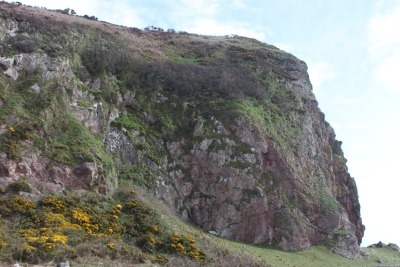 This rock was still home to a fortress when it became involved in a dispute between King James IV and the Lord of the Isles. That title was given to the de facto king of the islands and west coast of Scotland but in 1493 the last Lord of the Isles was required to forfeit his title and pay homage to King James IV of Scotland. To make sure of his position the King garrisoned Dunaverty Castle with Royal forces in 1494. Sir John MacDonald rebelled and, retook Dunaverty Castle just as the King was sailing away from it, taunting the royal party by throwing the dead body of the castle's governor over the castle walls. Eventually Macdonald was executed for treason in 1599.
This rock was still home to a fortress when it became involved in a dispute between King James IV and the Lord of the Isles. That title was given to the de facto king of the islands and west coast of Scotland but in 1493 the last Lord of the Isles was required to forfeit his title and pay homage to King James IV of Scotland. To make sure of his position the King garrisoned Dunaverty Castle with Royal forces in 1494. Sir John MacDonald rebelled and, retook Dunaverty Castle just as the King was sailing away from it, taunting the royal party by throwing the dead body of the castle's governor over the castle walls. Eventually Macdonald was executed for treason in 1599.
In 1645 an army of convenanters slaughtered a Royalist army, who had just surrendered to them, at this very spot and threw their bodies down the cliff or stabbed them with swords.
So a spot with several historical events. It goes to show that even remote and unlikely spots can play a role in history.

April 9, 2012
Isle of Arran – an island full of history
I just spent Easter weekend on the Isle of Arran. As with most trips to Scotland the weather can be a bit hit and miss but I love trips up here and try and get "North of the Border" every couple of years.
Arran is an island with a rich and LONG history.
People have lived on the island since about 5000 b.c. The old peoples burial cairns and stones circles litter the landscape. Only 800 yards from the Lagg hotel where we stayed was this burial cairn dating back 5000 years:
The greatest collection of stone age and bronze age remains is on Macrie Mhor which has no less than 6 stone circles and a burial cairn and several other remnants. These date back to between 1000 and 2000 BC:
Along the west shore not far from Macrie Mhor is "King's Cave" . This is one of the caves that it is claimed Robert the Bruce hid from the English in his campaign to free Scotland. Here is where he is supposed to have seen the spider weaving its web, then when the web blown away by wind, the spider tried again. From this he got the inspiration to return to the fight but also the saying "if at first you don't succeed, try, try again" was invented.
At Lochranza on the northern tip of the island is a small but intriguing baronial castle from 14th century which later became a residence of the local Laird.
So, not a bad weekend of walks and exploring. The food in Lagg Hotel was very nice too!!
April 1, 2012
The origins of April Fool’s Day
Have you been tricked this day by a prank or joke? Maybe you recall some famous tricks in the past. The BBC once broadcast a documentary of farmers in Italy picking spaghetti from bushes and trees after a bumper harvest. Thousands were tricked. In the USA Taco Bell announced it had purchased the Liberty Bell and renamed it the Taco Liberty Bell.
When though did this tradition start?
The suggestion, recorded in The Country Diary of Garden Lore, is that 1st April was the day that Noah sent a rook out looking for land as the flood waters subsided but where that comes from I cannot find out.
One explanation links it to ancient festivals such as the Roman Hilaria, celebrated at the end of March when people would dress up in disguises. There are theories that this time of year with its variable weather – sometimes cold, sometimes hot tricks men and makes us fools.
A more substantial explanation related to 1582, when France switched from the Julian calendar to the Gregorian calendar. This changed the start of the year from the last week of March/ 1st April as it used to be to January 1. because it took a while for this fact to becomes known and accepted people who celebrated the new year on 1st April were ridiculed. A paper fish called a “poisson d’avril” would be stuck to their backs to show they were fools. This is still part of present day French culture as shown in this satirical image:
In England the celebration came in about 1700 becoming more popular as the century went on. Britain changed calendars in 1752 themselves, which may have encouraged the tradition. The Scots celebrated a two day event (how come they often manage to get two days out of something we English get one day from!) Hunting the gowk day involved sending folk on wild goose chases or false errands, whilst Tailie Day involved pinning tails or notices to peoples backsides.
This morning my father recreated the spaghetti hoax in a picture he emailed me to show my son:
 Did you think up any good ones today? Or were you the butt of an April fool?
Did you think up any good ones today? Or were you the butt of an April fool?


